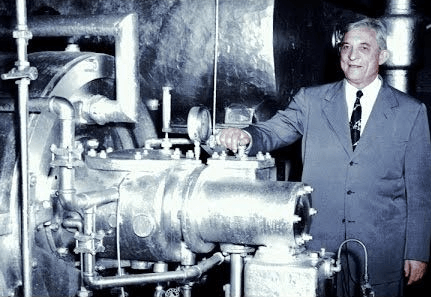Who Invented Air Conditioning

Willis Haviland Carrier is credited for the invention of the first modern air conditioning system. Willis was an engineer and innovator who developed the air conditioning system, the first electrical air conditioner.

History and life of Willis Carrier
Willis Carrier was born on November 26, 1876. Carrier earned an engineering degree from Cornell University in 1901. After completing his graduation, he took a job at Buffalo Forge Company, where he started his research in 1901. Willis was an enthusiastic problem solver and has solved the greatest problem of humankind: controlling the indoor environment.
The need for air conditioning and its invention
We may think that air conditioning is designed for cooling, rather the invention of air conditioning was for a very different need. Sackett, a Wilhelms Lithography and Printing Company situated in Brooklyn, had a problem with the quality of its presses due to humidity. Willis Carrier was a research engineer at Buffalo Forge company when he addressed this problem and invented an electric modern airconditioning system on July 17, 1902. The applications of this novel invention expanded to cooling later.
Willis Carrier took this invention to a global level by expanding his company globally in 1915. The air-conditioning then became popular and was used for maintaining temperatures inside the textile industries, hospitals, and offices. It also revolutionized the film industry by creating comfortable theatres in the harsh summer.
Timeline of different innovations in air conditioning systems
1915: Carrier Corporation was established by Willis to meet the rising demand for air conditioning systems. Air conditioning systems were now used in homes and automobiles.
1933: The air conditioner was designed with belt-driven condensing and other features like mechanical controls and evaporator coil.
1945: Robert Sherman invented a window air conditioner that was portable, and along with controlling temperature and humidity, it could also filter air.
As the technology evolved, Split air conditions soon became popular, with the thermostat as its most important part. Nowadays, split air conditioners come with a multi-split option. Central air conditioning is also developed for large malls and other public buildings. It contains a large compressor with tons of air conditioning capacity.
Air Conditioning Today
Nowadays, air-conditioning has expanded to computing systems and food processing industries and has become an integral part of our lives. It would have been impossible for data centers to operate the internet network without air conditioning. Air conditioning aids in providing clean air in the hospitals leading to fast recovery of the patients. It has also helped us preserve various historical artifacts.

The Evolution of Modern Air Conditioning Systems
Air conditioning in ancient times
Today, cooling is a necessity on a hot summer day. Even before the invention of the modern air conditioning system, people used ways to beat the heat. Some of these ways included using large ice slabs, circulating water through walls for cooling home, and hand fans. Although these methods helped, they were inefficient, and their use stopped after the invention of effective air conditioning technology.
The idea of the first modern air conditioning
The revolutionary idea of modern air conditioning took birth while Willis was on the Pittsburgh train platform on a foggy day. He found that he could convert air to maintain the desired amount of moisture by passing air through water to create fog and dry it. After this idea struck him, he built a system to control humidity within a year, which is fundamental to any air conditioning system.
The Evolution of Refrigerants
The earlier cool water was not available for air conditioning systems; hence people used refrigerants. Refrigerants absorb and discharge heat by converting in between liquid and gaseous states. As a refrigerant is compressed or evaporated, it displaces heat from one area to another.
Initially, refrigerants such as R22 were used. However, it is now discovered that it is causing ozone layer depletion. Thus, people have shifted to environment-friendly refrigerants like R410A refrigerants.
High-efficiency units
The demand for high-efficiency appliances is constantly increasing. Hence many companies have started manufacturing high-efficiency units to meet the demands. Companies have achieved this by using heat exchangers with increased surface area and high-efficiency motors. The SEER rating determines the air conditioner efficiency. Greater the SEER rating of air conditioner lesser is its electricity consumption, which would mean lower utility bills.
Thermostat Controls
The conventional thermostat allowed users to set on/off and other basic functions like controlling the temperature. Technological advancements have led to the programmed thermostats, which have greater control over the comfort levels in the homes.
Smart thermostats are more advanced as we can control them through Wi-Fi apps and devices. These advanced features provided to user help them to save electricity and lead a comfortable life.
Innovation in Compressors
Innovation in the compressors has led to an increase in the comfort and efficiency of the appliances. Traditionally, compressors had a single mode; it would be either on or off.
Nowadays, there are two-stage compressors. This type of compressor can be turned to a lower speed according to the cooling requirement, giving temperature control to the homeowner. Moreover, less electricity is consumed, ultimately contributing to a better environment.
